 Be Inspired Blog - Arizona
Be Inspired Blog - Arizona
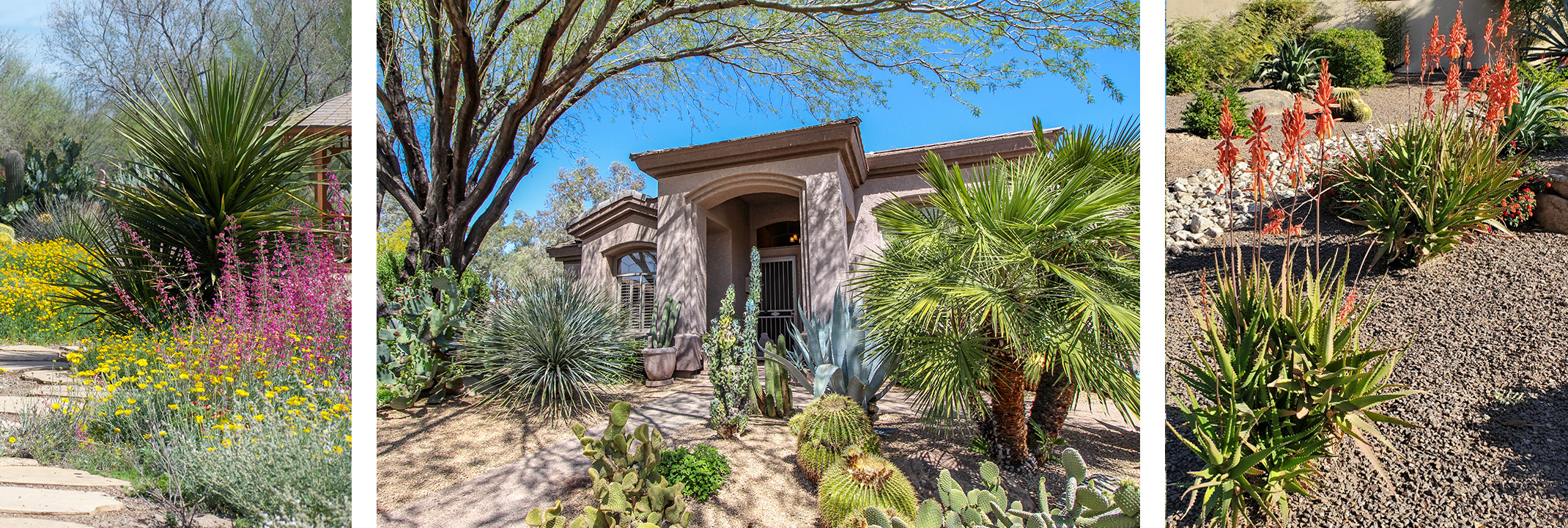
Why Rockscapes Aren't All They're Cracked Up To Be
Why It's Time To Let The Landscaping Rocks Roll
Almost year round, but especially during the summer, we’re looking for ways to keep our homes and yards more comfortable without breaking the bank on air conditioning and water bills. Smart landscaping choices can help keep you cool both inside and out.
Hardscaped Landscaping Is Hotter Than You Think
It can be tempting to cut down on your water bill by landscaping entirely with hardscape features like boulders, crushed rock, rock mulch, and artificial turf. However, they can actually increase the temperature surrounding your home and even lead to higher air conditioning bills. These landscaping features absorb heat from the sun and release it into the surrounding areas both day and night.
If you do have organic softscape features (plants), the extra heat released from the rocks increases plant respiration rates, meaning a plant could use food faster than it could make it. This is especially true for non-native plants not adapted to Arizona’s hot, desert conditions. Incorporating a layer of organic mulch around your plants can help mitigate this issue by providing insulation against the heat and reducing moisture loss in the soil.
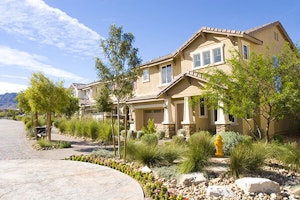
If you intend to use rocks as ground cover, avoid placing them next to your house on the south or west side to avoid excess heat from being released into the home. We also recommend incorporating fifty percent shade over the top of your rock ground cover by planting heat-tolerant trees, shrubs, groundcovers and other types of plants. Adding a mulch layer around these plants will further reduce soil temperatures and keep the roots protected from extreme heat.
Artificial turf is another popular option for reducing landscape water use and can make a good alternative in small areas like parking lots or street-side beds. However, it also absorbs heat and will increase the temperature in the immediate area. In fact, it often becomes dangerously hot to bare feet if exposed to direct sunlight - making it a poor choice for patios and play areas and something for pets to avoid as well!
Preparing an area for artificial turf requires excavation and the addition of added base materials and soil compaction, which can damage and inhibit the healthy root growth of plants that are in your yard.
Benefits of Softscaped Landscaping
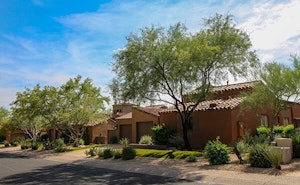
Real turf/grass, meanwhile, helps cool the area as it releases water into the atmosphere through evaporation. Other softscape features like shrubs, vines, groundcovers and trees can also help cool things down and reduce the load on your air conditioner. In order to limit water demands, you may choose to incorporate these items into an area that was originally a large traditional lawn—and instead opt for a limited turf area (smaller lawn). Applying mulch to these areas can further enhance moisture retention and reduce the amount of water required to sustain healthy plant growth.
Beat the Heat Buildup
Energy-efficient landscaping requires a little bit of basic knowledge about how heat moves through your home. Walls, windows, roofs and glass doors all absorb the sun’s radiant heat and bring in hot outdoor temperatures through conduction or infiltration. Shading your property with shade trees and shrubs can slow that exchange of hot air for cool by cooling outdoor surfaces and reducing the rate at which they absorb heat. Mulch can also contribute to this cooling effect by covering exposed soil, which prevents heat from radiating upwards.
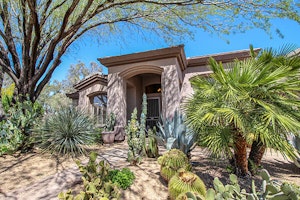
Make Shade
A tree’s growth rate, and the shape and density of its canopy, determine its shade value and potential energy savings. A fast-growing tree may offer shade faster but is likely to be less hardy than a slow-growing counterpart. Look for trees that produce a dense canopy with multi-directional branches and light-colored, smooth leaves. When you plant it, make sure to take into account the size it will be at full maturity, and the amount of space needed to develop a healthy root system. Ensure you're providing your new tree with the water it needs as it grows, and when it's first planted and is working to establish its root system. Surrounding trees with a thick mulch layer helps retain soil moisture and protect young roots from extreme temperatures.
Plant shorter trees or taller shrubs along the sides of your home to deflect the afternoon sun away, and take advantage of the cooling effect they can have on the ground around your home. Training hardy vines to grow on vertical trellises along your home’s exterior also helps deflect the sun and prevent the walls of your home from absorbing heat.
Encourage Cool Breezes
The same trees and shrubs that provide shade during the day can also help guide cool evening breezes during the times of year when it’s comfortable enough to open your windows at the end of the day. Since air moves most quickly in the air beneath the lowest branch and the ground, prune to circulate air toward your windows. Shrubs planted underneath windows and near those trees also help to channel air up and into first-story windows. Prune a small gap between the shrubbery and the walls of your home to prevent moisture buildup and reduce humidity.
Landscaping With Softscape Features In Poor Soil
Softscaping your lawn or rockscape to help keep your yard and home cooler only works if the plants can grow and thrive in your local soil. If your yard is primarily made up of sandy, rocky, shallow soil lacking in nutrients you’ll either need to do some serious soil amendmending or consider installing planters that are filled with a pre-mixed potting soil. Mulching around these planters or within the soil mix itself can improve water retention and overall soil health.
Raised Beds vs Basins
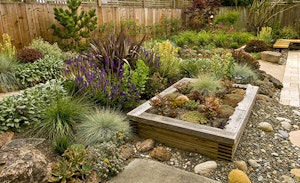
Both basins and raised beds can benefit from the use of mulch to retain moisture and reduce evaporation. A thick layer of mulch around plants can act as a natural barrier against temperature extremes and help reduce weed competition for soil nutrients. Mulch also prevents soil erosion and improves soil structure over time, whether in raised beds or basins.
So Which Form of Landscaping Is Better?
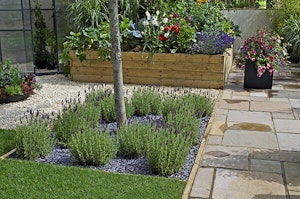
Ultimately, the master gardeners say, it comes down to the gardener. Both types of beds work well in local conditions, so whichever is more likely to get you out into the garden.
Of course, you should also consider which plants you’ll be growing, and how long you plan to keep them around. While small edibles and annuals are perfect for a raised bed, that shade-producing tree and row of hedges are better suited for a basin where it can stretch its roots and become an established and permanent part of your landscape. In either case, mulch will be a key factor in helping retain moisture and support healthy root development.
Ask The Gardening Experts
Still need some help figuring out what works best for your lawn, groundcover and landscape desires? Stop in to any one of our Valley locations and talk with one of our Trusted Garden Advisors about your unique yard. We’re happy to make recommendations from the ground up to help you create a balanced, low-water-use desert garden!

